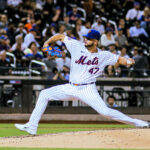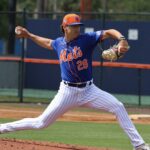
NY Times Bettmann/Corbis
Injuries happen. It’s part of the game of baseball; that’s why the disabled list exists and there are always players on it. Every once in a while, tragically, a player gets so seriously injured that he’s never the same again, or worse, he must hang up his cleats. There have been many times when, worst of all, a player is tragically killed. In all these cases, we are left thinking, “What if?”
What if Sandy Koufax‘s arm didn’t blow out and he pitched after 30? What if Lou Gehrig never got his ALS diagnosis? What if Roberto Clemente‘s plane didn’t crash? What if Ken Griffey Jr. wasn’t so injury-prone once he went to Cincinnati? This article will not explore those players or others in the Hall of Fame as they were still able to achieve the goal of every baseball player — making it to the Hall.
In this article, we’ll look at a 25-man roster of players whose careers and/or lives were done too soon, and whose injuries prevented them from playing at the level they once could. Players who might have been on their way to the Hall of Fame before they left us thinking, “What if?”
Catcher
Ray Fosse – There are lots of reasons people dislike Pete Rose. One of them is a violent collision with catcher Ray Fosse in the 1970 All-Star Game that many considered to be over-aggressive. Though initial x-rays showed no damage, a re-examination the following season revealed that he had sustained a fractured and separated shoulder that healed incorrectly, causing chronic pain. That, as well as other minor injuries along the way, severely impacted his career.
After making All-Star appearances and winning the Gold Glove his first two full seasons (1970-71), he averaged just 89 games a season from 1972-79 slashing just .246/.294/.344 and averaging four home runs and 27 RBIs a season. That’s compared to his two All-Star seasons in which he totaled 253 games with 30 home runs, 123 RBIs, and a .291/.344/.432 slash line.
Thurman Munson – One of the most beloved Yankees of all-time, Munson was killed in a plane crash at the age of 32. Prior to his tragic death that left a gaping hole in the hearts of New Yorkers, Munson had a career .292/.346/.410 slash line with 113 home runs, 701 RBIs, three Gold Gloves, seven All Star appearances and two World Series rings. He won the 1970 American League Rookie of the Year Award as well as the 1976 MVP when he hit .302/.337/.432 with 17 home runs and 105 RBIs.
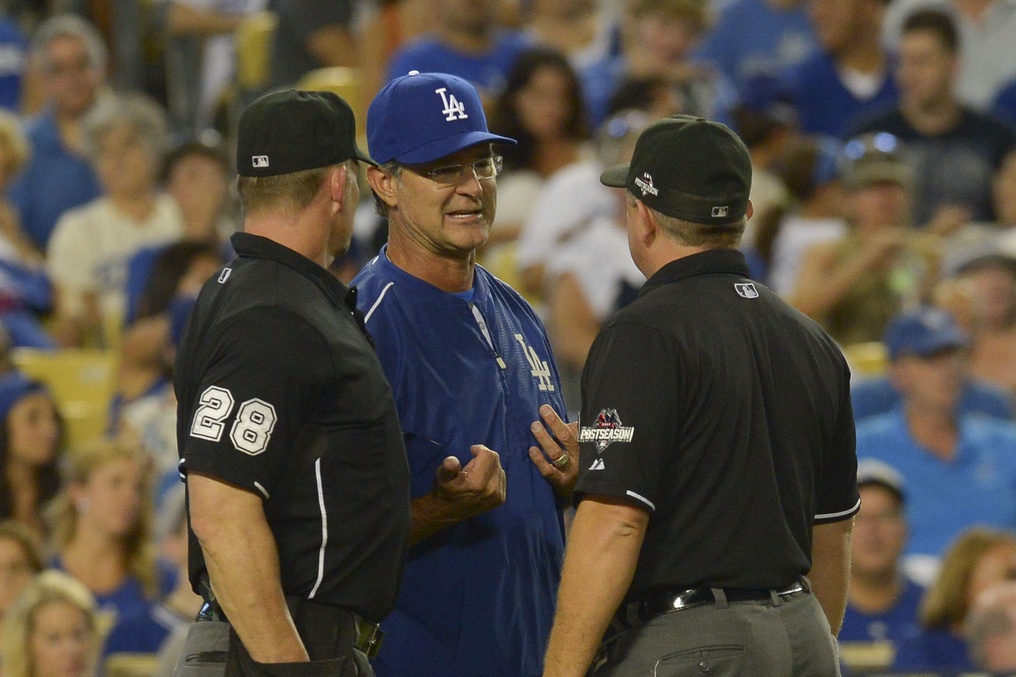
First Base
Don Mattingly – When telling Don Mattingly‘s story, there are two acts: Before and after his back injuries. Before his back flared up, he was one of the best players in the game, hitting for average and power. From 1984-89, he appeared in all six All-Star games, won the ’84 batting title (.342), won three straight Silver Sluggers, and averaged 203 hits, 27 home runs, 114 RBIs, and 43 doubles per season. He slashed .327/.372/.530 during that span and won five straight Gold Glove Awards.
Then his back flared up. From 1990-1995, he averaged 128 games, 10 home runs, and 68 RBIs a season, slashing .286/.345/.405. He still hit for average and got on base, as well as won four-straight Gold Gloves from 1991-1994, but his power was all but gone. His back injuries came, and his career went from a Hall of Fame trajectory to just appearing on the ballot. He spent 15 years on the ballot, never coming close to the necessary 75%. His highest vote was 28%, his first year on the ballot.
Mo Vaughn – When Vaughn’s age 32 season was all said and done, he had hit 299 home runs, driven in 977 RBIs, won the 1995 MVP, and appeared in three All-Star Games. Though, in August of 2000, he injured his arm swinging at a pitch. He would hit .198 with 39 strikeouts in 111 at-bats that September, then miss the entire 2001 season after reconstructive surgery to repair the biceps tendon and muscle on his left arm.
He was then traded to the Mets where he hit 26 home runs in 139 games in 2002, but then hit just .190 with three home runs in 27 games in New York in 2003. His season, and career, was cut short by an arthritic left knee. The enormous slugger finished with 328 home runs and 1064 RBIs, but it could have been a lot more.
Second Base
Ken Hubbs – The Cubs second baseman played his first full season in the Majors at the age of 20. He won the 1962 NL Rookie of the Year Award, slashing .260/.299/.346 with five home runs, 49 RBIs, 24 doubles and nine triples in 160 games. He led all NL rookies in games, hits, doubles, triples, runs and batting average. He also set many defensive records that season and was considered to be one of the best defensive infielders in the game, earning him the Gold Glove Award.
He hit .235/.285/.322 with eight home runs in his age 21 season, but tragedy struck as in the 1963-64 offseason, as Hubbs was killed at the age of 22 in a plane crash.
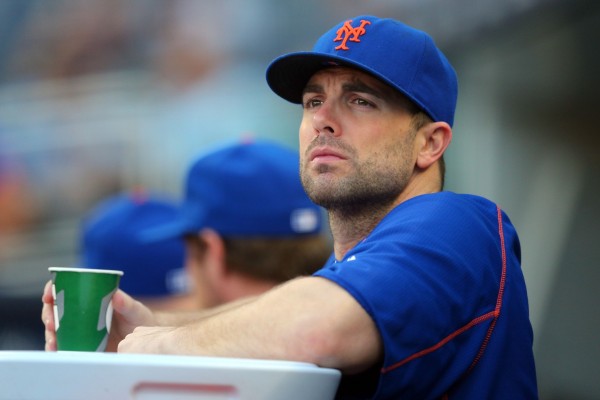
Third Base
David Wright – Stop me if you know this one. Captain America was one of the game’s budding young stars, one of the best third basemen in the game, and one of the best players in Mets franchise history. From his debut in 2004 to his last All Star season (to date) in 2013, he hit .301/.382/.506 with 222 home runs, 876 RBIs, 183 stolen bases, 345 doubles, and 25 triples. He averaged 27 home runs and 104 RBIs per 162 games during that span, winning two Gold Gloves, two Silver Sluggers, and appearing in seven All Star Games.
One year after signing a 7-year extension to be a Met for life, which was met with roaring praise, and being declared the fourth Captain in Mets history, the injuries started pouring in. He hit just eight home runs in 134 games in 2014, then 2015 is when hell on earth truly started. He was placed on the 15-day disabled list with a strained right hamstring, but was soon diagnosed with spinal stenosis. He played in only 38 regular season games in 2015, but led the Mets to the World Series where they lost to the Kansas City Royals.
After playing 37 games in 2016, he was placed on the disabled list with a herniated disc in his neck which required surgery. He did not return that season, and after diagnosed with a right shoulder impingement the following offseason, he eventually needed rotator cuff surgery and missed the entire 2017 season. At the time this article was written, he has yet to begin baseball activity and the likelihood of a return is ambiguous. One thing is for sure though: Without these injuries, Wright would not only be the best third baseman in Mets history, but one of the best to ever man the hot corner.
Wright still owns the 24th best WAR (50.4) among third baseman in MLB history with ten of them ahead of him in the Hall of Fame and three more likely soon. His .867 OPS ranks 10th all-time among third baseman. 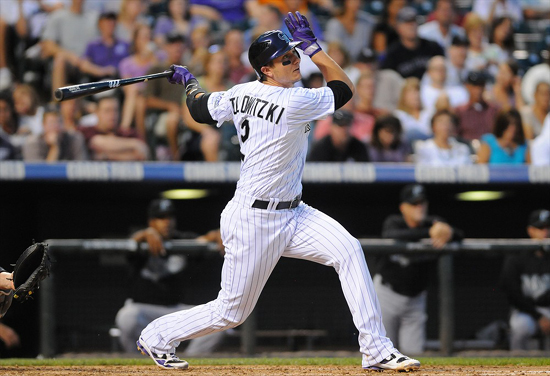
Shortstop
Troy Tulowitzki – About to undergo surgery to remove bone spurs in both heels, Tulo continues to be defined by his injuries. Once a perennial All-Star and MVP threat, the shortstop hasn’t played more than 131 games since 2011. His three best seasons came from 2009-11 when he hit .304/.376/.554, averaging 30 home runs, 97 RBIs, 13 stolen bases, 31 doubles, and five triples. During that span he made two of his five career All-Star appearances, finished 5th, 5th, and 8th in MVP voting, won two Silver Sluggers and won two Gold Glove Awards.
After appearing in just 47 games in 2012, he appeared in 126 games in 2013 and finished 17th in MVP voting, slashing .312/.391/.540 with 25 home runs and 82 RBIs. He then managed to finish 25th in voting the following season despite appearing in just 91 games, slashing .340/.432/.603 with 21 home runs. Since being traded to Toronto, his injuries have continued but his production while on the field has diminished, hitting .254/.318/.443 in 131 games in 2016 and .249/.300/.378 in 66 games in 2017. Now 33 years-old, many are beginning to question whether or not he will return at all, let alone this season.
Nomar Garciaparra – His career got off to a roaring start when he won the 1997 AL Rookie of the year, tallying 209 hits, 11 triples, 30 home runs, 98 RBIs and 20 stolen bases. He followed it up with three consecutive stellar seasons, as in 418 games, he averaged 28 home runs, 107 RBIs, 43 doubles, five triples, 10 stolen bases and 194 hits with a .350/.404/.595 slash line. He also won two consecutive AL batting titles, hitting .357 in 1999 and .372 in 2000.
Then he hurt his wrist in 2001, and was limited to just 21 games. He managed to have two consecutive seasons with 156 games played, leading the Majors with 56 doubles in 2002 and finishing 11th and 7th in MVP voting, but that wrist injury wouldn’t be his last. From 2004-2009, he averaged just 84 games a season. He still hit for average, but his power was all but gone, slashing .291/.343/.446. He was on track for the Hall of Fame, but the six-time All Star’s career was derailed by injuries, one after the other.

Outfield
Oscar Taveras – Few players in recent memory came up to the Major Leagues with more hype than Taveras, someone who was compared by many to Vladimir Guerrero. Signed as an international free agent at 16-years-old, he hit .320/.376/.516 across six minor league seasons and in 2013 and 2014 was a consensus top-five minor league prospect. He was called up in 2014 and after hitting a home run in his debut, he played a total of 80 games for the Cardinals in the regular season, slashing .239/.278/.312 with three home runs and 22 RBIs.
The Cardinals made the playoffs that season and he made his mark, hitting a game-tying home run in Game Two of the NLCS. He hit .429 in seven postseason games, but the Cardinals lost to the Giants. On October 26, just a few days after his teams elimination, Taveras was killed in a car accident in the Dominican Republic at the age of 22. He was an enormous piece of the Cardinals’ plans, and his death left their organization, as well as all of baseball, wondering what could have been.
Lyman Bostock – The lefty-hitting outfielder finished 27th in MVP voting for the Twins in 1977, slashing .336/.389/.508 with 14 home runs, 12 triples, 16 stolen bases, 90 RBIs, and 199 hits. After signing as a big-name free agent with the Angels, he batted just .150 in April of 1978. He met with the team’s management and tried to return his April salary saying he did not earn it, and when they didn’t let him, he donated it all to charity. After hitting .404 in June, he ended up with a .296/.362/.379 slash line and finished 23rd in MVP voting.
Playing in Chicago against the White Sox, with just about a week left in the season he visited his uncle, Thomas Turner, in Gary, Indiana. Bostock and his uncle went to visit Joan Hawkins, a woman Bostock had tutored as a teenager. After the visit, Turner agreed to give Hawkins and her sister, Barbara Smith, a ride to their cousin’s house. Turner drove the vehicle with Hawkins in the front and Bostock and Smith in the back.
Smith had been living with Hawkins while estranged from her husband, Leonard Smith. According to Smith, his wife was frequently unfaithful to him, and although he did not know Bostock, he would later say that upon seeing Bostock get into the back seat of the vehicle with his wife, he concluded that the two were having an affair even though Bostock had just met her minutes before.
As Turner’s vehicle was stopped at a traffic signal, Smith pulled his car up alongside them, leaned out of his vehicle, and fired one blast of a .410 caliber shotgun into the back seat of Turner’s car, where Bostock and Barbara Smith were seated. He said that the shot was intended for his estranged wife, but Bostock was in the way. Instead of striking her, the blast caught Bostock squarely in the right temple. He died two hours later at the hospital at the age of 27.

Jim Davidson – AP
Bo Jackson – One of the greatest all-around athletes of all time, Jackson remains one of the few to be named to All-Star Games for two major professional sports (MLB and NFL). He was not known for his batting average or on-base ability, but it was his power and speed that made him so much fun to watch. From 1987-1990 he totaled 107 home runs and 78 stolen bases.
His best season came in 1989 when he finished 10th in AL MVP voting, slashing .256/.310/.495 with 32 home runs, 102 RBIs, six triples, 26 stolen bases, and an MLB-leading 176 strikeouts for the Royals. After a hip injury playing football in 1991, he missed all of the 1992 season and appeared in just 160 games between 1993 and 1994 when he retired.
Tony Conigliaro – Hitting .273/.339/.508 with 84 home runs in his first three seasons (399 games), Conigliaro quickly cemented himself as a fixture in the Red Sox’ outfield. After putting up those strong numbers from 1964-66, he was on pace to have his best season yet. Through 95 games, he was hitting .287/.341/.519 with 20 home runs and 67 RBIs and appeared in his first and only All Star game. Then the beginning of the end of his career was on August 18th, 1967 when he got hit in the face by a pitch, sustaining a linear fracture of the left cheekbone, a dislocated jaw, and severe damage to his left retina.
He missed the Red Sox’s playoff run that season and all of 1968 before attempting a comeback in 1969. Though he was never the same as before his injury, he played well enough in 141 games, slashing .255/.321/.427 with 20 home runs and 82 RBIs. His 1970 season was great as he slashed .266/.324/.498 with a career-high 36 home runs and 116 RBIs, though that was pretty much it for him. He would hit just .222/.285/.335 in 74 games for the Angels in 1971 and didn’t appear in another game until he played 21 games for Boston in 1975 when he hit .123. It was then he decided to retire.
In 1982, he suffered a heart attack and then a stroke, causing him to fall into a coma. He would stay in that coma until his death eight years later when he died at the age of 45.
Pete Reiser – At the age of 22, “Pistol Pete” led the Brooklyn Dodgers to the 1941 pennant in his first season as a regular starter. He led the National League in runs (117), doubles (39), triples (17), SLG (.558), OPS (.964), and total bases (299). He also won the batting title, slashing .343/.406/.558 with 14 home runs and 76 RBIs en route to finishing second in MVP voting. He appeared in the 1942 All Star Game as well before serving in the military from 1943-1945.
Upon his return, he made his third and final All Star team, leading the Majors with 34 steals. Pistol Pete earned his nickname by playing all-out, crashing into walls constantly. He fractured his skull running into an outfield wall on one occasion (but still made the throw back to the infield), was temporarily paralyzed on another, and was taken off the field on a stretcher a record 11 times. Dodger manager Leo Durocher thought very highly of Reiser, drawing comparisons to Willie Mays. “Pete had more power than Willie, left-handed and right-handed both,” he said. “He had everything but luck.”
The injury that cost Reiser his career, according to him, was a shoulder injury he sustained playing Army baseball in 1945. “It wasn’t as serious as the head injuries but it did more to end my career,” he said. “The shoulder kept popping out of place, more bone chips developed, and there was constant pain in the arm and shoulder.” From 1948 until he retired in 1952, he averaged just 62 games a season, slashing .246/.366/.392.

Pitcher
Jose Fernandez – Though the circumstances of his death remain controversial and unclear, there is no doubt that baseball lost one of the most promising talents of this generation when Jose Fernandez was killed in a boating accident on September 25, 2016, at the age of 24. Before his death, he had pitched a Cy Young-caliber season earning him an All Star appearance and a 7th place finish in voting, after going 16-8 with a 2.86 ERA, 2.30 FIP, and 12.5 K/9 which led all Major League starters.
He burst onto the scene in 2013 at the age of 20, won the 2013 Rookie of the Year, made his first All Star appearance, and finished third in Cy Young voting after going 12-6 with a 2.19 ERA in 28 starts. He started only 19 games between 2014 and 2015 due to Tommy John surgery, but recorded a 10-3 record with a 2.71 ERA during that span. With a career 38-17 record, 2.58 ERA, 2.44 FIP, 6.8 H/9, 0.6 HR/9, 11.2 K/9, and 4.21 BB/K, there is absolutely no question that had he lived to pitch a full career, he would have won a few Cy Youngs on his way to the Hall of Fame ballot.
Brandon Webb – From 2006 to 2008, you could not talk about the best pitchers in the league without seriously considering Brandon Webb. During that span, the sinker-baller started 101 games, going 56-25 with a 3.13 ERA, 3.23 FIP, seven shutouts and a 0.5 HR/9 for the Diamondbacks. He narrowly beat Trevor Hoffman to win the 2006 Cy Young Award when he led the National League with 16 wins, three shutouts, and a 3.18 FIP. He then finished second in voting in both 2007 and 2008 to Jake Peavy and Tim Lincecum respectively.
From 2005-2008, Webb was the definition of a workhorse, averaging 232.0 innings and 34 starts per season. Then, four innings into the 2009 season, he was removed from a game with shoulder pain. He was placed on the disabled list with right shoulder bursitis and underwent season-ending surgery. The Diamondbacks picked up his $8.5 million option for 2010 (instead of paying a $2 million buyout) and he didn’t pitch all season. Following the 2010 season he signed a one-year deal with the Rangers and appeared in a minor league rehab game. He pitched 3.1 innings allowing five runs on eight hits before finding out he would need a second rotator cuff surgery. He officially retired in 2013.
Kerry Wood – In Kerry Wood‘s fifth career start, at the age of 21, he threw a one-hit, no-walk, 20-strikeout shutout against the Astros. He barely edged Todd Helton for the Rookie of the Year award after starting 26 games, going 13-6 with a 3.40 ERA and 3.16 FIP, striking out 233 batters in 166.2 innings. His 12.6 K/9 and 6.3 H/9 both led Major League starters. Wood missed the last month of the season with elbow soreness, a precursor to 1999 spring training when he tore his UCL and needed Tommy John. He missed all of that season and some of 2000, but came back in time to start 23 games, going 8-7 with a 4.80 ERA.
He pitched well from 2001-2003, going 38-28 with a 3.41 ERA and 3.70 FIP across 93 starts. He struck out 700 batters in 599.0 innings, and in 2003, he made his first All Star game, leading the Major Leagues with 266, 21 HBP, 6.5 H/9, and 11.3 K/9. He started just 22 games in 2004 before beginning his transition to the bullpen due to how often he got injured. After starting (and appearing in) just four games in 2006, he would never start another game. He would, however, appear in 257 games as a reliever, pitching to a 3.65 ERA and 3.53 FIP for the Cubs, Indians, and Yankees. He was an effective reliever, but not close to his dominance as a starter earlier in his career.
He was the fastest pitcher in MLB history to strike out 1,000 batters, going by both appearances (134 games) and innings pitched (853.0 innings). If you watch his 20-strikeout game, it does not take a veteran scout to know that had he not had an injury-plagued season, he would have been one of the most prolific strikeout pitchers of all time.
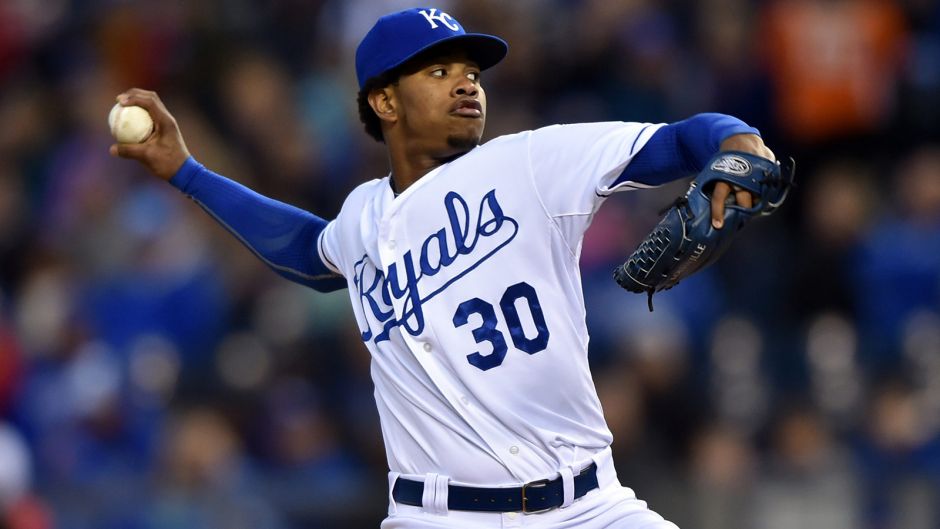
Courtesy of Fox Sports
Yordano Ventura – Flamethrower Yordano Ventura was the undisputed ace for the Kansas City Royals from 2014-2016. During that time he went 38-30 with a 3.91 ERA and 3.94 FIP, striking out only 459 batters in 532.1 innings despite his upper-90s fastball. He was only getting better, but on January 22, 2017, he was killed in a car crash in the Dominican Republic at the age of 25. Though he might not have been on a path to the Hall of Fame, he had a fiery personality and was a sure bet to make a few All Star Games had he had a full career.
Josh Johnson – Pitching for the then Florida Marlins, Josh Johnson burst onto the scene, going 12-7 with a 3.10 ERA in 31 games (24 starts) in 2006. It didn’t take long for his injuries to start, as he missed the last three weeks of the season with forearm stiffness. Despite that, Johnson, Scott Olsen, Anibal Sanchez, and Ricky Nolasco became the first quartet of rookie pitchers to each record 10 wins. He finished 4th in Rookie of the Year voting, with teammate Hanley Ramirez taking the hardware.
He began the 2007 season on the disabled list due to an irritated UCL, and after starting four games in June with a 7.47 ERA, he underwent Tommy John surgery. He made a quick return from surgery, just 11 months since his surgery, and started 14 games in 2008 going 7-1 with a 3.61 ERA. He then had two consecutive stellar seasons, going 15-5 with a 3.23 ERA, 3.06 FIP, and 8.2 K/9 in 209.0 innings. He was better in 2009, going 11-6 with a National League-leading 2.30 ERA and MLB-leading 2.41 FIP. After allowing just 0.3 HR/9 across 28 starts, he finished 5th in Cy Young voting and made his second All Star team. He also lost a 1-0 game against the Phillies when Roy Halladay threw a perfect game.
His 2011 season started phenomenally, as he went 3-1 with a 1.64 ERA across nine starts and 60.1 innings pitched. He would miss the rest of the season with right shoulder inflammation, and after not requiring surgery, he was named the first Opening Day starter for the Miami Marlins in 2012. He went 8-14 with a 3.81 ERA and 3.40 FIP across 191.1 innings in his last season with the Marlins. After being traded to the Blue Jays in part of a blockbuster deal, he went 2-8 with a 6.20 ERA and 4.62 FIP in 16 starts. After more inflammation, surgery to remove bone spurs from his elbows, and much more, he would never appear in another MLB game and retired in January of 2017.
Mark Prior – After making a strong debut at the age of 21 in 2002, he broke out in a big way the following season going 18-6 with a 2.43 ERA, NL-leading 2.47 FIP, and 245 strikeouts in 211.1 innings. He made his sole All Star appearance, finished third in Cy Young voting (behind Eric Gagne and Jason Schmidt), and 9th in MVP voting. He started just 21 games in 2003 before starting 27 in 2004, going 11-7 with a 3.67 ERA and leading the Majors with a 10.2 K/9.
He missed the first two months of the 2006 season with a strained shoulder, and went 0–4 in four starts with a 7.71 ERA before being put on the disabled list again, this time straining his left oblique in batting practice. He came back later in July and pitched 3.1 innings against the Nationals before being pulled from the game and placed on the DL with tendinitis. 2006 saw him go 1-6 with a 7.21 ERA in nine starts.
That offseason, he was diagnosed with loose shoulder and underwent exploratory shoulder surgery. Dr. James Andrews found that there was vast structural damage, leading him to be non-tendered by the Cubs and miss all of 2007. In the ’07-’08 offseason, he signed a one-year deal with the Padres, but a torn shoulder during rehab forced him to miss 2008 as well. He attempted comebacks, pitching for many teams’ minor league systems before announcing his retirement in 2013.
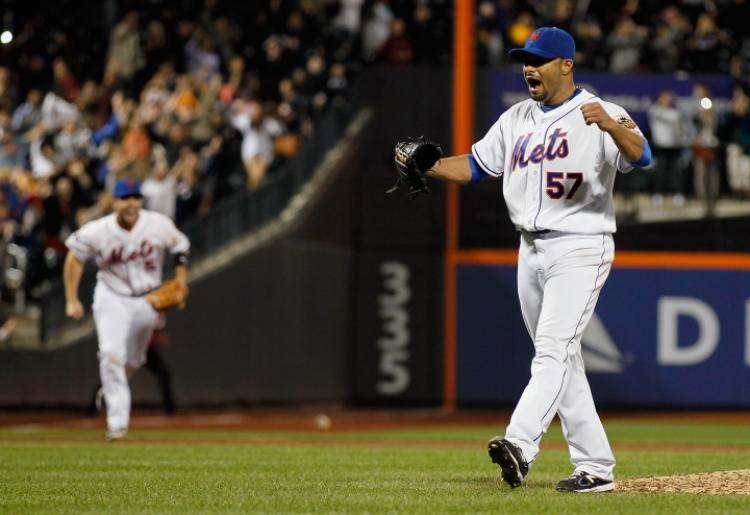
Johan Santana – Because of this player, Mets fans can say, “IT HAS HAPPENED!” Before the days of Clayton Kershaw, the best left-handed pitcher in the game was Johan Santana. From 2004-2008, Santana didn’t finish lower than 5th in Cy Young voting, winning the Award in 2004 and 2006 for the Twins. During those five seasons he went 86-39 with a 2.82 ERA, leading the Majors in wins once, ERA twice (not including the AL title in 2004), led the league in starts and innings pitched twice, strikeouts three consecutive seasons (2004-2006), WHIP four consecutive seasons (2004-2007), H/9 three consecutive seasons (2004-2006), and K/9 three consecutive seasons (2004-2006).
In 2008, his first season with the Mets, he finished third in Cy Young voting and led the Majors with a 2.53 ERA while starting an NL-most 34 games. He started 54 games between 2009 and 2010, pitching to a 3.05 ERA. He was still in the discussion for best starter in the game, but on September 14, he underwent surgery to repair a torn anterior capsule in his left shoulder. He missed all of 2011 before returning in 2012, and, well, you know what happens next.
On June 1st, 2012, 11 starts after returning from his shoulder surgery, he and the Mets faced the Cardinals at Citi Field. Nine innings and 134 pitches later, Santana had thrown the first no-hitter in New York Mets history. He walked five and struck out eight, his last pitch of the evening being his signature change-up to strike out David Freese. Many blame Terry Collins, who left him in the game, for ending Santana’s career, but one game with 134 pitches did not do the trick. “No-han” would start 21 games in 2012 and after another major shoulder surgery in early 2013, he hasn’t appeared in a Major League game since. He pitched his last full, effective season (2010) at the age of 31. If he had never needed the shoulder surgery, he would have been a sure-fire first-ballot Hall of Famer.
Mark Fidrych – Mark “The Bird” Fidrych was known for crouching down on the pitcher’s mound and fixing cleat marks, known as “manicuring the mound”, talking to himself, talking to the ball, aiming the ball like a dart, strut around the mound after every out, and throw back balls that “had hits in them,” insisting they be removed from the game. The thing about him, though, was that he was really, really good at pitching.
In his rookie season for the Tigers, at the age of 21, he went 19-9 with a MLB-leading 2.34 ERA and AL-leading 24 complete games. He won Rookie of the Year and was the runner up to Jim Palmer in Cy Young voting. The injuries started piling up very quickly for him, though, tearing the cartilage in his knee during Spring Training in 1977. He returned 11 great starts, going 6-4 with a 2.89 ERA, but in a July start he felt his arm, in his words, “go dead.”
From 1978-1980 he started a total of 16 games with a 5.67 ERA in 81 innings. In 1985 it would be revealed that when his arm originally went dead, he had torn his rotator cuff and had been pitching with that injury since then. He was not an overpowering pitcher; he had just 3.5 K/9 in his Cy Young season, but he was dominant all the same. One of the most unique personalities of all time would have had an equally stand-out career if he hadn’t been injured.
Tim Crews – From 1987 to 1991, Tim Crews was an effective, reliable reliever. In 345.2 innings across 232 games, he pitched to a 3.05 ERA and 3.24 FIP. His best season came in 1990 when he pitched 107.1 innings across 66 appearances (two starts), recording a 2.77 ERA, 3.18 FIP, and 1.137 WHIP. On the contrary, his worst season was 1992 when despite a strong 3.53 FIP, his 5.19 ERA in 78.0 innings was the worst of his career.
A free agent after the 1992 season, Crews signed a contract with the Cleveland Indians but would never pitch for them, or any other team for that matter. During Spring Training, he was killed in a boating accident that also took the life of teammate Steve Olin and injured Bob Ojeda. This was the first time an active Major Leaguer had died since Thurman Munson in 1979. While he wasn’t on a Hall of Fame trajectory, before he died at the age of 31, he was one of baseball’s most consistent relievers and had many more strong seasons ahead of him.

David Banks-USA TODAY Sports
Chris Carpenter – This one’s weird. From 1997-2002, Chris Carpenter pitched for the Toronto Blue Jays and was mediocre. He went 49-50 during that span with a 4.83 ERA and 1.510 WHIP and hit the disabled list three times in 2002. The third time he went to the DL in 2002 was in August due to a torn labrum, which he got surgery for that September. The Cardinals signed him on a minor league, incentive-based deal that offseason with the hope he would return mid-2003. He made eight minor league starts before re-tearing his labrum due to complications from his surgery.
The Cardinals stuck with him, though, and that would turn out to be a great decision. Fully healed, he went 15-5 with a 3.46 ERA, putting up the best numbers of his career. He would improve even more in 2005, appearing in his first All Star game and wining the Cy Young Award after going 21-5 with a 2.83 ERA, seven complete games, four shutouts, and 213 strikeouts in 241.2 innings. His 2006 was strong as well, as he finished 3rd in Cy Young voting, leading the National League with a 1.069 FIP and leading the Cardinals to a World Series Championship.
He then appeared in only five games between 2007 and 2008 due to elbow problems but, once again, came back in a big way, finishing second in Cy Young voting to Tim Lincecum in 2009 after going 17-4 with an NL-leading 2.24 ERA in 28 starts. He then led the Majors in starts in both 2010 and 2011, starting 35 and 34 games respectively, pitching to a 3.33 ERA across 472.1 innings during that span. After starting three regular season games in 2012, he never appeared in another game thanks to Thoracic Outlet Syndrome as well as other injuries. He did pitch in the 2012 postseason, finishing his career with a 10–2 record with a 2.88 ERA across 100 innings in 16 postseason starts.
While his first injury seemed to save his career, he had plenty more which derailed his Cy Young-caliber seasons. The two-time Comeback Player of the Year appeared on the 2018 Hall of Fame ballot but garnered just two votes, not enough to stay on for another year.
Dave Dravecky – Known for his ability to pitch effectively both as a starter and a reliever, Dravecky made his only All Star appearance in 1983. He pitched unimpeded by injuries from 1982 to 1987, recording a 3.13 ERA in 1012.2 innings across 217 games (137 starts). He was traded from the Padres to the Giants in 1987, and in 1988, a cancerous tumor was found in his pitching arm. He underwent surgery, which removed half of the deltoid muscle and froze the humerus bone as they tried to eliminate all of the cancer cells.
Though doctors advised him to wait until 1990 to pitch, he was eager to get back on the hill, making his return to the MLB mound in August of 1989. In his first start back, he earned a victory after pitching eight innings. His next outing started off as good as could be, pitching three no-hit innings. In the fifth inning, he felt a tingling sensation in his arm. Then, in the sixth inning, as he threw a pitch to Tim Raines, his humerus bone snapped with a sound so loud it could be heard throughout the stadium. His humerus sustained a clean break half way between his shoulder and elbow, obviously ending his season.
The Giants won the pennant in 1989 after defeating the Cubs in the NLCS in five games, but in the post-game celebration, Dravecky’s arm was broken again while running out to the mound to celebrate. The doctor who examined his x-rays noticed a mass in his arm, which turned out to be malignant. Dravecky’s cancer had returned, and 18 days later, he officially announced his retirement.
Herb Score – In a rotation also featuring Bob Feller and Don Lemon, it would be hard for a lot of pitchers to get noticed – but not Herb Score. In 1955, his first season, the lefty won Rookie of the Year after going 16-10 with a 2.85 ERA and a then rookie-record 245 strikeouts — which also led the Majors that season. He followed it up with a better 20-9 record, 2.53 ERA, AL-leading five shutouts, and led the MLB with 263 strikeouts, a 2.73 FIP, 5.8 H/9, and 9.5 K/9.
Five starts into his 1967 campaign, he was again doing his thing, having gone 2-1 with a 2.00 ERA and 39 strikeouts in 36.0 innings. On May 7, Score was hit in the face by a line drive off the bat of Gil McDougald, breaking his facial bones and injuring his eye. McDougald reportedly vowed to retire if Score permanently lost his sight in one eye as a result of the accident, and though he missed the rest of the season, he did eventually recover his 20/20 vision.
He returned in ’58 and after appearing in 12 games (five starts), he tore a tendon in his arm while pitching and had to miss the rest of the season. In 1959, he had adjusted his mechanics to avoid a similar injury. As a result of the changes, his velocity dropped. He did manage to pitch the entire 1959 season, going 9–11 with a 4.71 ERA and 147 strikeouts in 160.2 innings, but the injuries kept piling up. Score retired at the age of 29 during the 1962 season.
Honorable Mentions
J.R. Richard, Prince Fielder, Adam Greenberg, Darryl Kile, Nick Adenhart, Tim Leary, Ellis Valentine and Juan Encarnacion









